We celebrate the end of the year the only way we know how: through lists, essays, and mixes. Join us as we explore the music that helped define the year. More from this series
“I hear a new world/ Calling me/ So strange and so real/ Haunting me”
– Joe Meek, “I Hear a New World”
In our early years, much of TMT’s identity was formed through our unabashed championing of so-called “noise music.” But noise in this age of hyper-mediation and decentralized networking is not simply a marketing keyword for a strand of music that had actually existed in various permutations for decades. These days, what we often describe as noise is a sweeping, persistent phenomenon, a swallowing constant that’s difficult to describe succinctly but always felt comprehensively. Within this noise, we are required to fashion performances that are oftentimes only legitimized through naive political framing, and we come out with wild distortions of culture and warped views about our roles within it: fetishized surprise releases, dance memes literally created by companies, co-opted event albums — instantaneous value creation.
This year, we won’t be shaping our list of favorites into a narrative. Any narrative is always already corrupted (not a bad thing). Instead, at the end of 2016, in a moment when we sometimes prioritize who we are over what we do, when we forget that the political process has never been civil, when we’ve become so desensitized to ongoing institutionalized, structural murder, we could probably use some self-reflection, a humble reminder of what it means to be social animals who happen to love making noise, musical or not. Because sometimes what constitutes the sounds of the year have nothing to do with our favorite music. Sometimes the sounds arrive as an “incongruously cheerful” symphony of muffled ringtones soundtracking tragedy. Sometimes they’re the creepy harmonies of algorithms, robots, and AI technology (which can now also write novels, create movies, kill people, oversee political campaigns, and become “Hitler-loving sex robots”). Sometimes it’s the noise from social media — whether it’s about protecting water, something about pizza, or the brave documentation of an unjustified death — or simply the noise as heard through our own curiosity, persistence, innovation, and risk-taking.
But whatever was upsetting about the noise in 2016 can still be reframed, however cautiously. As ideologies were set ablaze in both literal and metaphorical ways, we were reminded that this earth is populated first and foremost by people — human bodies — not ideas. 2016 was terrifying and weird and utterly exhausting, all of us partially brought to heel by mediums through which some of us might’ve hoped would “save us,” a reckoning that at its least harmful bruised only egos as we simultaneously retreated in disgust and worked toward something resembling a post-truth unification. It was our 2016, the horror a little closer to home this time, but in my opinion as dreadful and as inspiring as any other year. So strange, so real: whatever 2016 might’ve signified politically or aesthetically could maybe, possibly be the initial rumblings of a new world, a bubbling fulfillment of a promise that we never realized we were being ushered toward all along.
50
N-Prolenta
A Love Story 4 @deezius, neo, chuk, e, milkleaves, angel, ISIS, + every1else…. and most of all MY DAMN SELF
[PTP]

Stretching the boundaries of ballad work and symphonic noise, N-Prolenta’s A Love Story… headlined a stacked year for PTP (f.k.a. Purple Tape Pedigree) with an angelic, heart-direct study in iconography and neoliberalism (re: Rafael Lubner). Political and biotechnics aside, A Love Story felt at home in 2016, simply bedroom-eyed at face value, with serpentwithfeet, Chino Amobi, and Dedekind Cut all sharing a power-questioning, noise-and-drone-centric pop spirituality. The spacious, occasional heavenly movements from N-Prolenta differed from the accompanying 2016 works (Driks Ultra Three and Dviance collaboration STRIATED INATTENTION AND A CRIPPLED BLISSING), but stacking up action and horror flicks too high gets dangerous. That’s why there was romance — A Love Story.
49
Sean McCann
Music for Public Ensemble
[Recital]
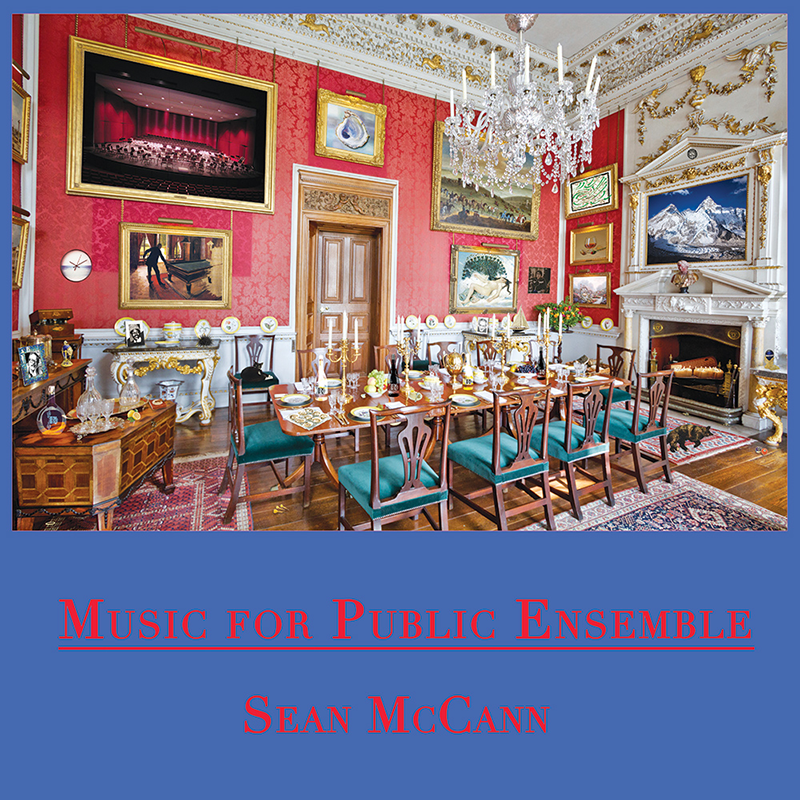
What is my shell? It’s meant as a defense, but also as a home. A place I can retreat into when I feel overwhelmed, bombarded, or just tired. Crucially, it isn’t all of me, only what I show. It’s what people see when they notice me. What composes it? It’s composed of thousands of smaller shells, and it can change shape and size and color as I wish. As I grow, as I move, I gather new shells, and I shed old ones so that others can find solace in them. How are your tendons? Mine hurt sometimes, especially on long days of searching. For me, finding release is a solitary exercise, but finding total solitude can be its own exhausting feat sometimes. What do you carry outside your tongue? Despite my inwardness, my breath lives outside of my shell. It’s recyclable, its existence no longer bound once it leaves my shell. It’s part of a chorus that is always performing. I am part of a chorus that is always performing: A Music For Public Ensemble. A boy birthed on a beach spends his lifetime walking, collecting shells, tossing away shells, inhaling, exhaling, performing. Each morning, when he cracks open his eyelids, brushing away secretions of sand and pearls, his composition is different. And has his character changed?
48
Ka
Honor Killed the Samurai
[Self-Released]
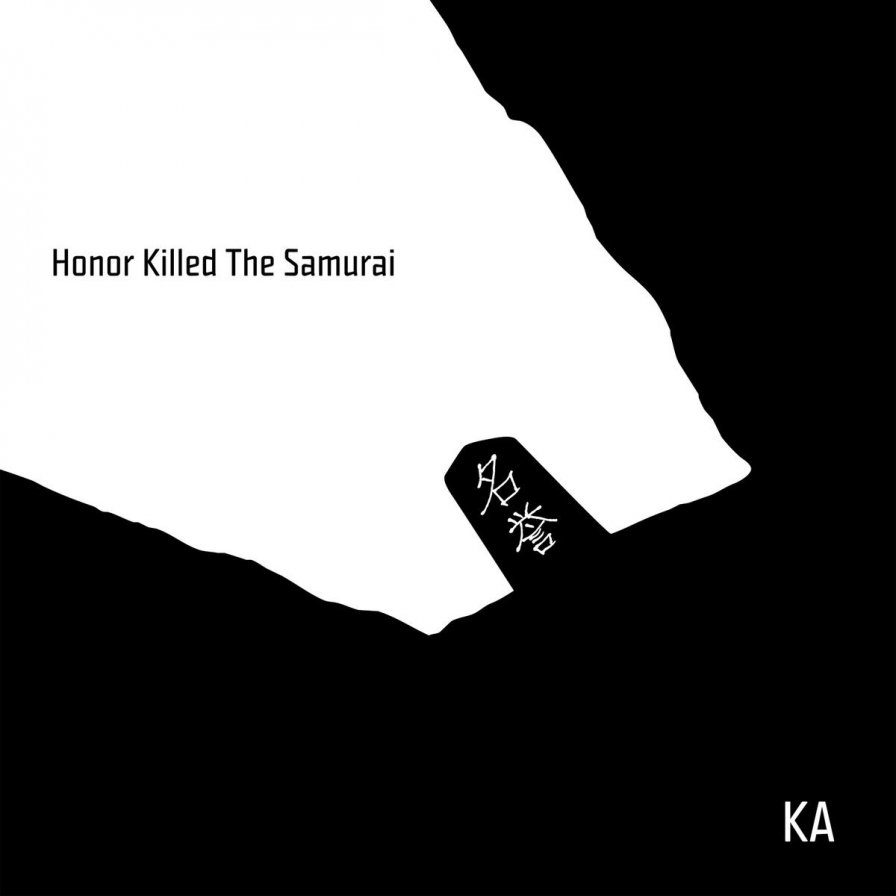
I’ve been a smoker for 10 years. Doctors always tell me to cut back. Then, with a smile and a wink, they tell me that I should actually quit. This example extends past itself. The US = profits over logic. Why cure and guide when you can jest and make money off an ailment? Professionals who gain off our pain and addictions, our desires and wants, who should never gain off of our missteps, also gain against their duty with winks and smirks. Ka, in 2016, was the antithesis of this. He spoke economically of illegal economics, of instances painted in truth and knotted morals, but without that aged cuteness. Poetically wrapped in parcels snug and fitting, his words seemed to follow one another like stones on a path. To be unpacked? Yes. But no grab-ass riddle shit here. Nuggets to digest; spittle caked on the corners of our mouths to be wiped away, not secretly mocked around a corner with a knowing authority. And with Honor Killed The Samurai, there was no hint of a wink or a smirk. What was said was said. And what was said was to be listened to. Not just heard, but listened to. Deft formation of symbols and syllables. A humble telling of experience over embellishment. As always, the jester juggled and the crowd applauded, while the poet spoke off in a corner to a few turned ears.
47
Amnesia Scanner
AS [EP]
[Young Turks]
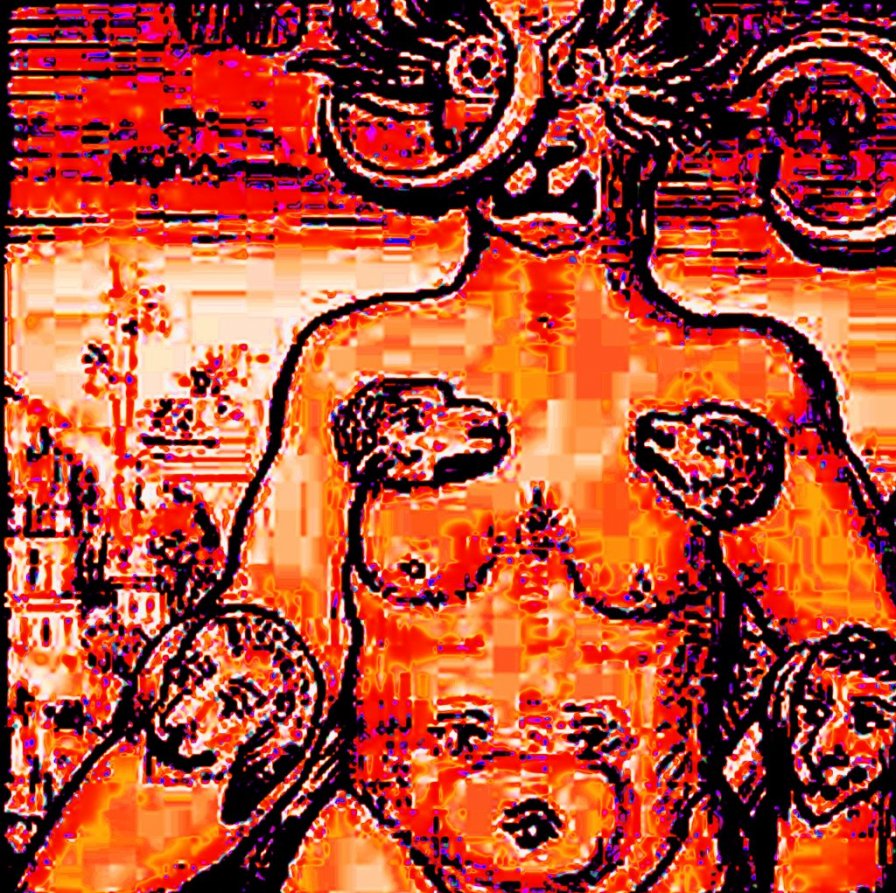
It’s all reductio ad absurdum now. Cascading not to the bottom, but to nowhere at all. The kickback into ones and zeroes; all your data are belong to them. Amnesia Scanner’s garden, “a walled space with vegetation,” bore corrupted fruit this year with AS. These compositions seemed too technologically loaded to be codified within 12 inches of plastic, were they not so visceral and club-ready. The initial effect was akin to PaulStreching the granularities of a data dump or mapping the spectrogram result of a Hieronymus Bosch hellscape (Boaistuau’s “The Monster of Cracow” was an actual touchstone here): nonetheless, the sounds that could be made by Amnesia Scanner ricocheted throughout our im/permanent bodies, unsettling and liberating sensibilities of the dance-/home-listening divide — in a way, their place in Young Turks’s roster didn’t seem so iconoclastic after all. Histories and traditions colluded into pure aesthetic, characterized by a juddering A/V clusterfuck of a website. If hearing AS meant sublimating oneself to an alien unreality, the long-lasting palpitations it provoked were physical and entirely real.
46
Angel Olsen
MY WOMAN
[Jagjaguwar]

When I first started listening to MY WOMAN, I was worried. The downtempo synth-pop of opening track “Intern” sent the same shudders down my spine that Iron & Wine’s awful Kiss Each Other Clean did, an album that saw a formerly cathartic indie-folk musician blatantly appealing to greater numbers. Blessedly, my opinion about MY WOMAN changed as quickly as Angel Olsen’s third album progressed. As it turns out, “Intern” is an anomaly in the tracklist, setting the scene for her most diverse, dynamic, and complete album yet. All of Olsen’s soul-wrenching, poetically introspective songwriting was here, only more evolved, imbued in gracefully grander pop-oriented forms that nevertheless sounded natural in her expanding aesthetic. The explorative country-tinged ballad “Sister” and the Mellotron prog of “Woman,” the latter of which sounds like a spiritual counterpoint to the Timber Timbre track of the same name, are two of the longest (and deepest) tracks she’s ever written, but indie-rock bombers like “Shut Up Kiss Me” and “Give It Up” still came in as tight and as focused as anything by Sharon Van Etten. On MY WOMAN, Olsen took a firmer grasp on the reigns of writing and producing her music. She knew what she wanted, and she got it. This is how you open up without giving it all away.
45
Oren Ambarchi
Hubris
[Editions Mego]
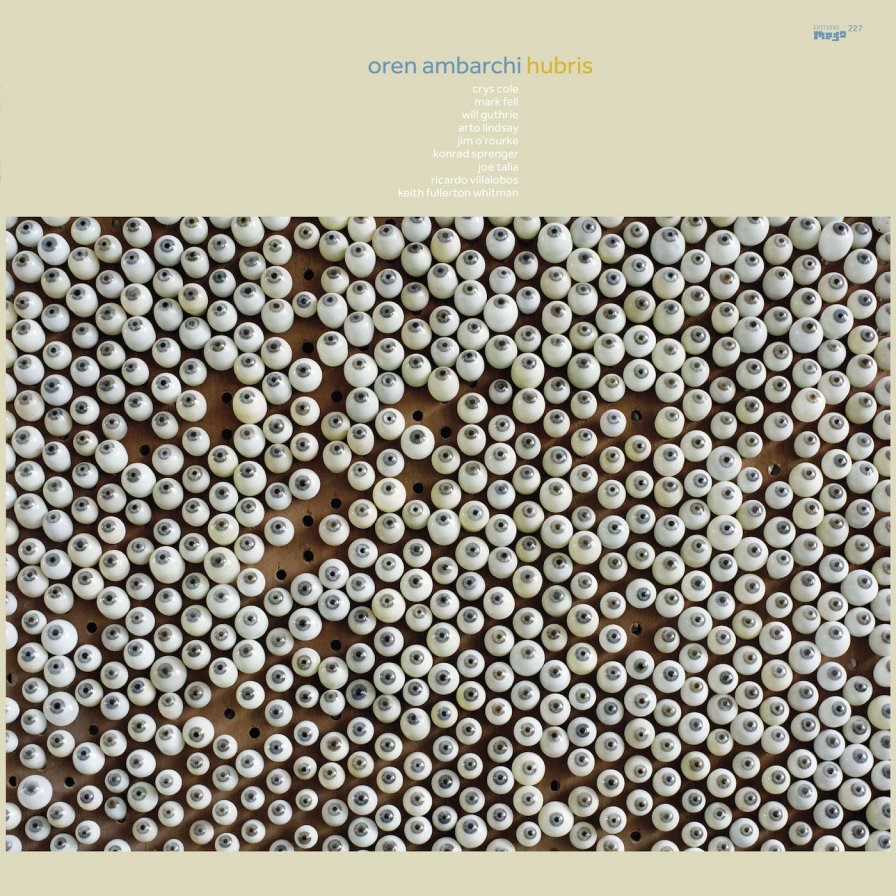
It’s hard to imagine why Oren Ambarchi would name a work as infallible as his latest after hubris, a characteristic that reliably foretells of a hero’s downfall through their own overconfidence. It is especially surprising considering that Hubris came off as fairly egoless: Ambarchi sat as director, rarely the spotlit actor or protagonist. Stiff throbbing rhythms brought a trance, and fluid textures filled the spaces; very little self was present. When the album’s cover art was revealed, the list of names donned on it was enough to excite geeks who’ve scrolled through The Wire or TMT once or twice. Although typically individualistic well-known personnel, in this mix, these musical auteurs lost their definition; they became organs in a larger body. And while there’s certainly a performance of egoism by any singular artist who stakes their claim over work that took so many others to make — Elysia Crampton’s Elysia Crampton Presents: Demon City and Sean McCann’s Music for Public Ensemble parallel this — we could also find a humbling image in the inhabitance of that singular artist’s name by the whole ensemble, as though Ambarchi himself was composed of component parts — O’Rourke, Cole, Fell, Villalobos, etc. — and was incomplete without them. Thus, Ambarchi & Co. performed their unyielding drive through the album’s three movements until there was no option but to suddenly stop.
44
Huerco S.
For Those Of You Who Have Never (And Also Those Who Have)
[Proibito]

In a year when one’s long-abandoned paranoia could feel like a comfy, nicely worn-in shoe, For Those of You was a fine totem to the overcast municipal nature walk. These trails of varying levels of upkeep, where one crosses highways, dump sites, strip malls, and railroad tracks. The album was a clammy headspace for slow, deliberate delineation as we walked. Not just delineation of thought, but of when our preoccupations become unaccountably pointless. Like when we watched a long, slow freight as it passed. A cold comfort that brought a breeze with it. We watched that train, and the passing of time was only down to when it did. When some part of us thought the procession was ending, it didn’t. And cars of increasingly inscrutable dimensions rumbled through until the train became a chain of oblong matter bouncing and careening on undulating cables. Once finally passed, its absence left us with blurred vision and a numb sort of contentment. Far reaches never felt so close, and if they had, Brian Leeds provided us with a gossamer reminder.
43
Mitski
Puberty 2
[Dead Oceans]
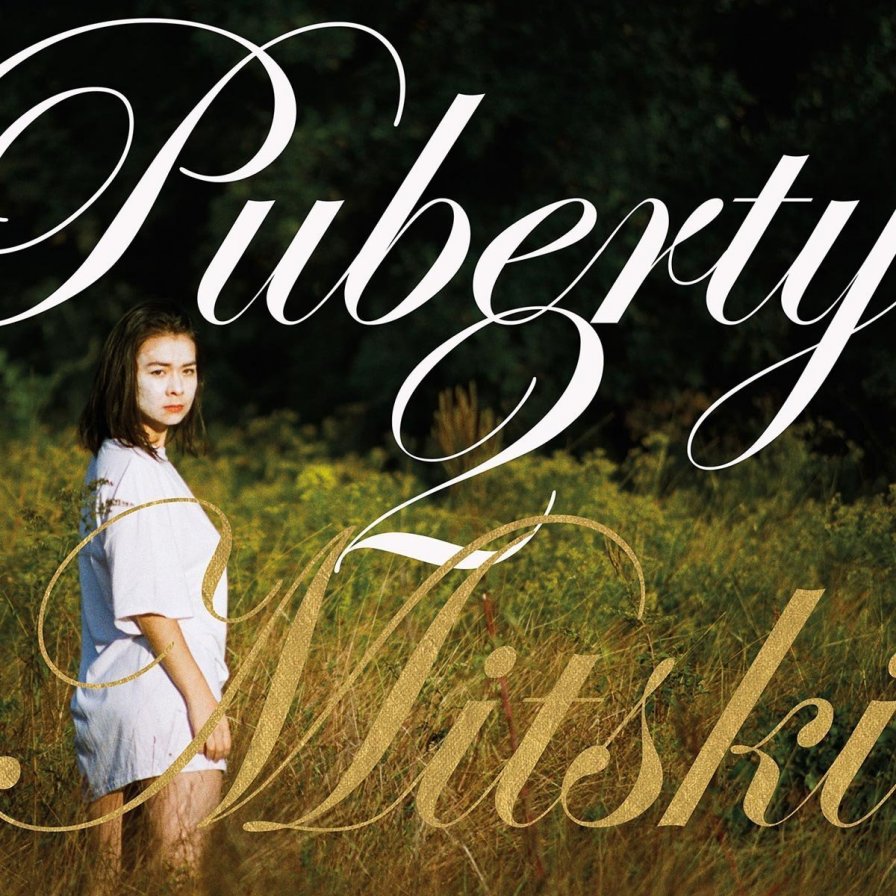
Too many things made Puberty 2 essential: the subversion — sometimes subtle, sometimes overt — of expectations, the intrigue, the control, the sense of humor, the perspicuous and witty portrayal of people, situations, and their frequently pathological interactions. Melancholy as it sometimes was, it wasn’t an unthinking howl, but a perfectly crafted play of persona, personality, and undervalued perspectives, forged from experience — not just the expression of greater, deeper forces, but as something created, carefully conceived. And that was crucial. We still don’t know if we’re more like holes or folds in this moth-eaten world, and the many ways we can be done unto and undone by others are not remotely evenly distributed, to our continuing disgrace. Too many of us, myself included, have to be reminded often about this. But of itself, that was only part of the reason we liked Puberty 2 so much: it was music, not an essay, not a memoir — with all the old-fashioned good stuff too: singing, playing the goddamn guitar, writing songs — clever, catchy songs embellished with neat, modern arrangements. And all the elements were absolutely essential — Mitski as a symbol, Mitski as a musician, Mitski as a human being.
42
DJ Coquelin & MC Cloarec
JE M’EN TAPE
[PRR! PRR!]
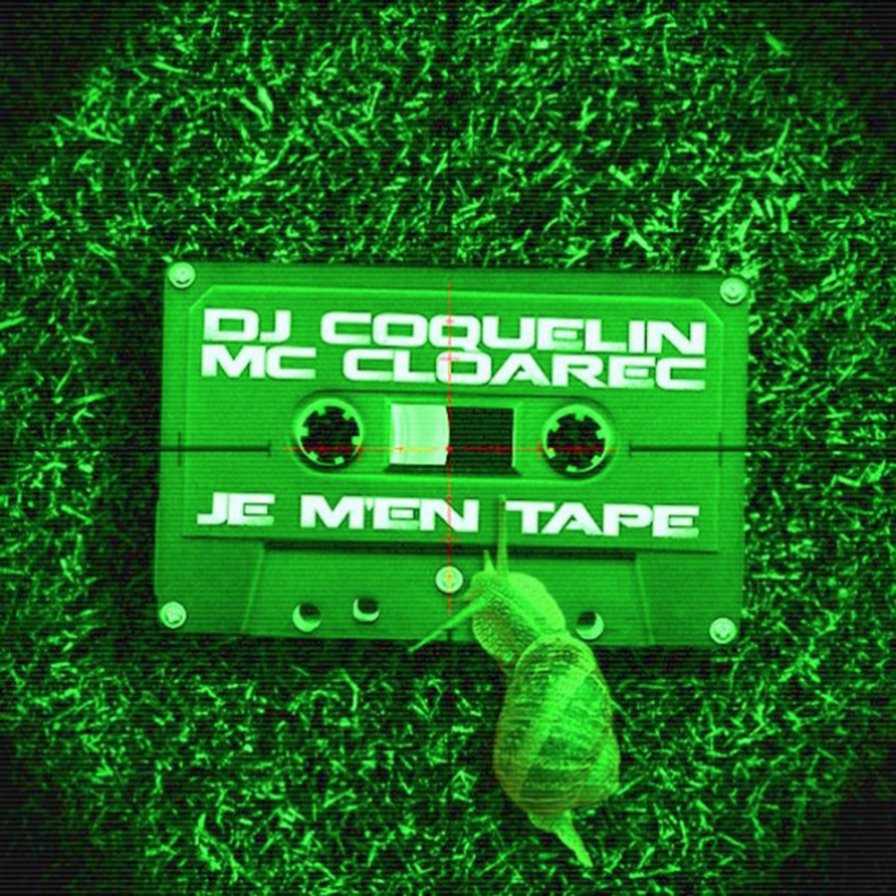
Captagon was the Belgian gabber scene’s drug of choice. No wonder: amphetamines were a minimum requirement to keep up with that sort of rhythm. Then again, the pill was also used to treat children with attention disorders; it was bound to have unexpected side effects sooner or later. A couple of decades past the gabber heyday, DJ Coquelin and MC Cloarec popped a couple of tabs, laid a scattershot but unmistakably demented beat, and started flipping the dial. JE M’EN TAPE was the aural register of such a journey, much more than the sound of an evening spent shaking your head out of its socket. The rush of clarity that the psychostimulant provided them blasted the duo through makina snippets, chopped-n-screwed Zeuhl, German hip-hop sketches, EBM relics, Italian tecnopop, and acid mixes of American pop hits, mapping the outskirts of the European electronic scene that trendy mags usually overlook. The stuff you’d find in gas station discount bins near the once-porous borders that birthed legends like the Gypsy Kings, DJ Bobo, Baccara, Gigi D’Agostino, Laid Back, or Mano Negra. An autoethnography of the willfully trashy, uncool, and… fun in the shape of a cassette.
41
ANOHNI
HOPELESSNESS
[Secretly Canadian/Rough Trade]
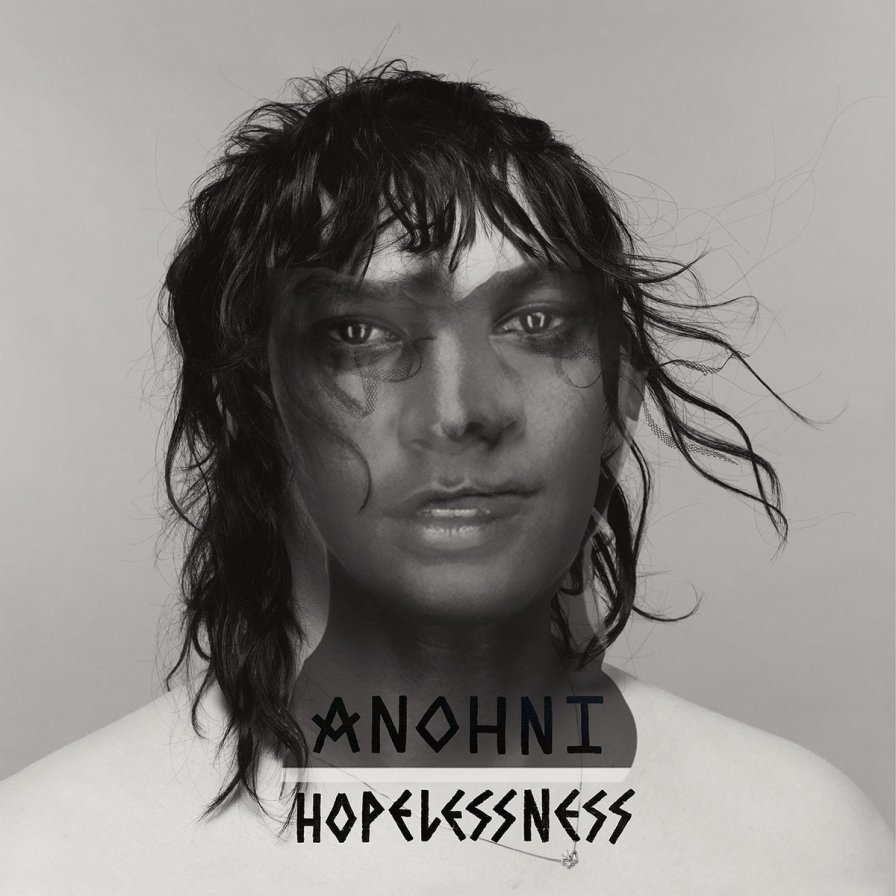
How many times did I turn to HOPELESSNESS in the midst of tragedy in 2016? Trump, police brutality, shootings, Syria, Brexit, DAPL — it just never stopped. I sought respite in this album, a record that departed from hope with due abandon. Of 2016’s condition of despondency, Antony Hegarty (a.k.a. ANOHNI) asked The Guardian: “Can we address it? Can we inhale it? Can we withstand it?” These questions saturated HOPELESSNESS. Sonically, the album was a masterpiece: beautifully triumphant harmonies, Hegarty’s sorrowful vibrato, glowing synths, all delivered with awe-inspiring clarity.
Virulent guilt was a salient theme throughout (“How did I become a virus?”); so too was confronting the “chasm of denial” that so often stands in the way of change. Meditations on voyeurism, the failings of Obama, Stockholm-syndrome pleas for torture, violence, and more snuck into the ear with graceful amity. Still, within the record’s dejection, there was a sense of vulnerability; with tempestuous affect, Hegarty achieved an album that was at once morose, refined, and passionate. I can’t help but point the reader to Ben Levinson’s year-end essay “The Strength of Vulnerability,” a beautiful piece about choosing radical softness in the wake of hopelessness. I feel like that was exactly what HOPELESSNESS was: a wonderful record that embraced intimacy and introspection in the face of uncertainty.
More about: Amnesia Scanner, Andy Stott, Anohni, Arca, Autechre, Beyoncé, Charli XCX, crying, Danny Brown, David Bowie, Dean Blunt, Dedekind Cut, djwwww, Elysia Crampton, Frank Ocean, Future, James Ferraro, Jenny Hval, Jeremih, Julianna Barwick, KA, Kanye West, Kero Kero Bonito, Klein, Macula Dog, Mitski, N-Prolenta, Noname, Oren Ambarchi, Princess Nokia, Puce Mary, Rihanna, Sean McCann, serpentwithfeet, Solange, The Caretaker, The Savage Young Taterbug, Tim Hecker, Young Thug, Yves Tumor
We celebrate the end of the year the only way we know how: through lists, essays, and mixes. Join us as we explore the music that helped define the year. More from this series



